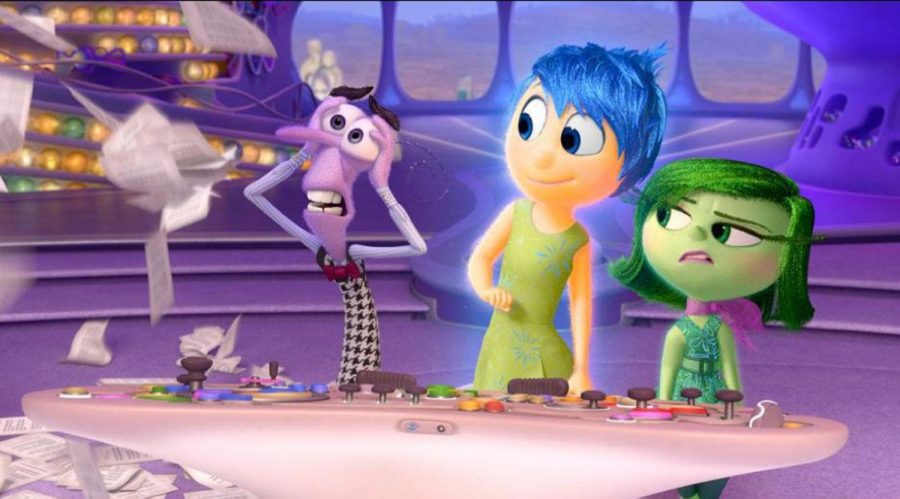Docter embraces metaphor with emotional, whimsical “Inside Out”
June 16, 2015
“Inside Out”
Starring: Kaitlyn Dias, Amy Poehler, Phyllis Smith
Directed By: Pete Docter
Grade: A-
Stock up on Kleenex, because “Inside Out” will leave you sniffling — or outright bawling — in your seat.
Pete Docter, known for classics like “Toy Story” and “Up,” and his animation team masterfully bring a high-concept idea to life with “Inside Out.” In the film, there is a “headquarters” in everyone’s head controlled by five anthropomorphic emotions: Joy, Sadness, Disgust, Anger and Fear. In “Inside Out,” we spend most of our time in the mind of Riley (Kaitlyn Dias), an 11-year-old girl who lives an idyllic life in Minnesota, where she’s well-liked and plays ice hockey.
Her emotions are primarily controlled by the relentlessly upbeat Joy (Amy Poehler), who keeps Riley a happy, goofy kid with a great relationship with her parents (Diane Lane and Kyle MacLachlan). But when Riley is forced to move with her family to San Francisco, Riley has fewer reasons to be joyful. Joy wrestles with Sadness (Phyllis Smith), and they are both plunged out of headquarters and into the outer, Candyland-like world of Riley’s mind. With Joy and Sadness gone, Riley’s emotions are left in the hands of Disgust (Mindy Kaling), Fear (Bill Hader) and Anger (Lewis Black), resulting in one very moody preteen.
The world inside Riley’s head is colorful with characters from her past, like Bing Bong (Richard Kind), Riley’s forgotten imaginary friend and a comical dolphin-elephant-cat-cotton–candy hybrid. The animation of the film isn’t as detailed as it is in its Pixar predecessors, like the breathtaking, realistic-looking ocean in “Finding Nemo,” and the plot is fairly predictable. There’s never any doubt that Joy and Sadness will return to headquarters, or that Joy will realize she can no longer be the only emotion in charge.
However, the true strength of the film lies in metaphor. When Bing Bong mourns his long-gone relationship with Riley, Joy tries to force him to grin and bear it to make him “happy.” This doesn’t work, and it isn’t until Sadness allows him to express his pain and then validates it that he truly feels better.
This foreshadows a scene where Riley acknowledges her feelings of loss and is open with her parents about how hard the move has been for her. The scene feels almost like a slow exhale, a satisfying release of an emotion that’s been pent up for so long. It’s a sophisticated metaphor for real life and how often we bottle up our own emotions, hiding behind a façade of happiness instead of allowing ourselves simply to feel. It’s not a lesson we see very often in films, especially those geared toward children, but it’s absolutely an important one.
It will be interesting to see whether Pixar decides to make a sequel. Though the film ends with a humorous nod to Riley’s impending puberty (Disgust notices a new button on their control pad and asks, “What’s puh-bert-tee?”), it’s doubtful Pixar will make that film — but that’s OK.
“Inside Out” is fine as a standalone movie, and it’s a refreshing change of pace for the studio that’s recently struggled with the critical dud, “Cars 2.” If “Inside Out” is any indication of the direction Pixar is taking its future films, then we have nothing to worry about.



